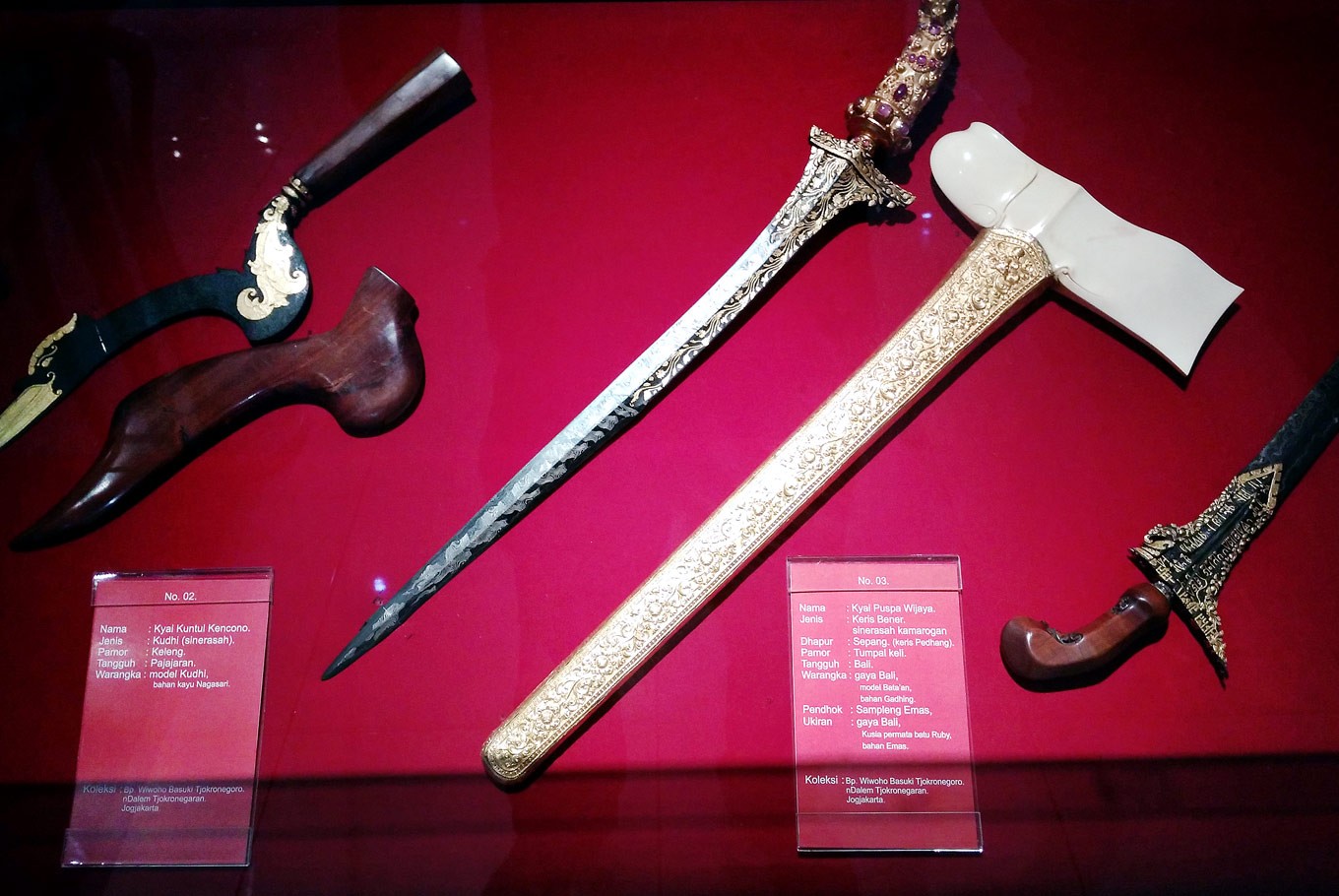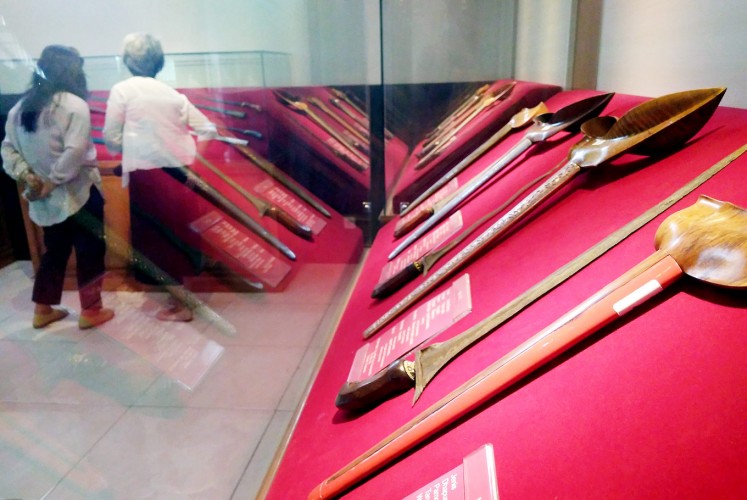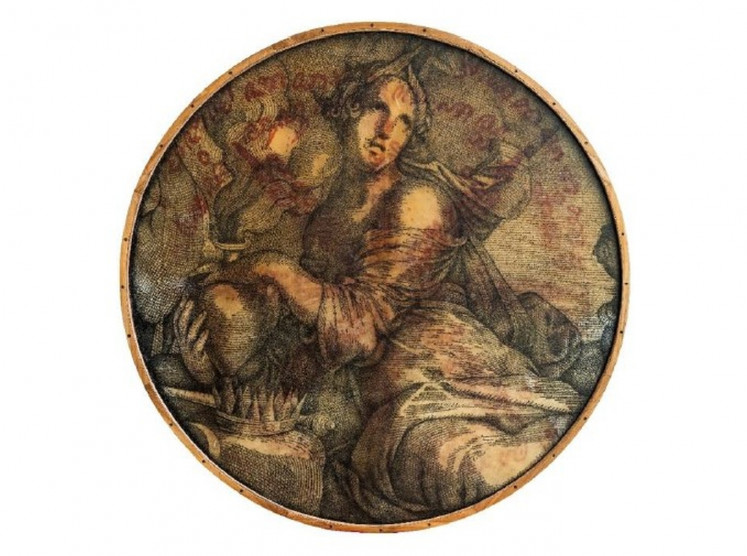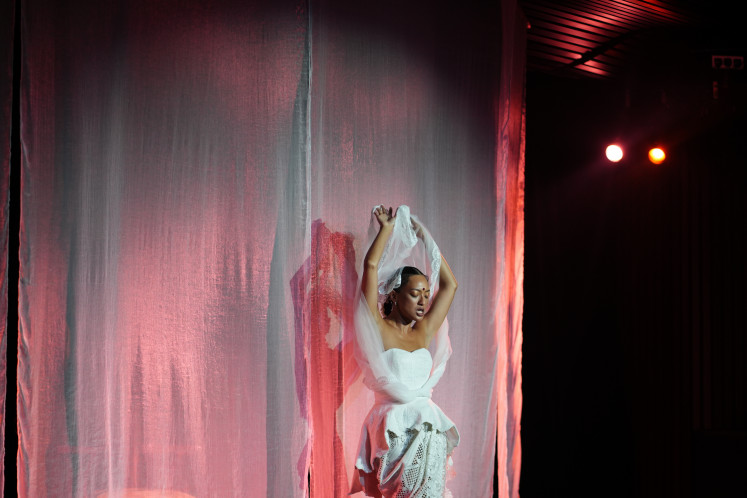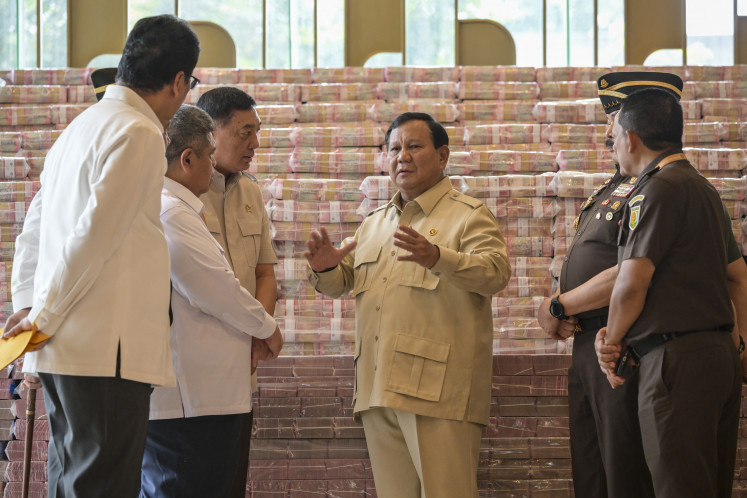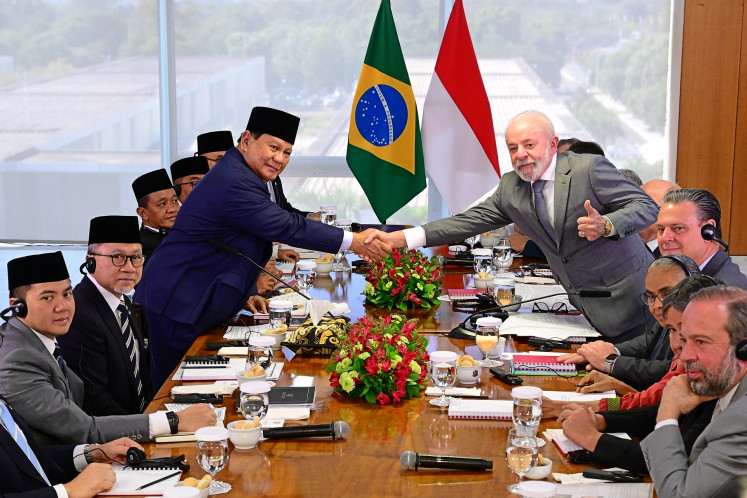Popular Reads
Top Results
Can't find what you're looking for?
View all search resultsPopular Reads
Top Results
Can't find what you're looking for?
View all search resultsMuseum Keris Nusantara: A complete platform for kris
Change text size
Gift Premium Articles
to Anyone
A
new museum in Surakarta, Central Java, aims to reconnect contemporary Indonesians with the original values and philosophy of the keris (kris), an ancient serpentine weapon often associated with the mystical realm.
Officially opened by President Joko “Jokowi” Widodo last month, the Museum Keris Nusantara (National Kris Museum), in the Sriwedari complex, Surakarta, holds 409 kris from across Indonesia.
“Some collections are masterpieces, which are centuries old. The Buddha-era kris is the oldest and was crafted in the eighth and ninth centuries,” said Agus Triatmodjo, a museum curator team member.
Read also: Jokowi to lend own 'keris' collection to Surakarta museum
The museum has four floors and a basement, which has been transformed into display rooms, an administration center, an audio-visual facilities library and a children’s room.
The third floor offers a diorama showing kris-making, crafting equipment and workshops similar to those used by the kris empu (master kris maker) centuries ago.
“Kris-making used to be done under the trees, where workshops were built for empu to craft their daggers,” Agus said.
Welcome: The front view of the National Kris Museum at the Sriwedari complex in Surakarta, Central Java. (JP/Ganug Nugroho Adi)The main display room on the fourth floor houses different blades, which were donated by collectors.
To date, the newly opened museum has welcomed about 4,325 visitors through its doors, said Bambang MBS, the head of the museum’s technical executive unit of the culture office.
Bambang added that most of the visitors were locals, mostly students.
“Only 29 tourists from Spain, Malaysia and Australia visited the museum last month,” he said.
Read also: Kris lovers seek a way to penetrate generation Z
Most of the kris pieces are from Java, a region where the traditional weapon has become a part of daily life.
“Javanese men must possess wanito [wife], wismo [house], curigo [kris], turonggo [horse] and kukilo [bird] in order to be perfect. However rich they might be, they will be seen as incomplete without them,” Ronggojati Sugiyatno, a kris lover and collector, said.
“Every man in Java, regardless of his wealth, had to own the weapon. All males between the ages of 12 and 81 wore a kris on their belts,” he added.
Making kris: A diorama depicts the production of traditional kris blades at the Museum Keris Nusantara. (JP/Ganug Nugroho Adi)Other than being a weapon, the kris, according to some Javanese, has supernatural powers.
“Our ancestors practiced ancient rituals and the kris is one of the symbols they believed had mystical powers,” Subandi, a kris empu, said.
The sultanate palaces in Surakarta and Yogyakarta still continue the ancient tradition of bathing the sacred kris blades during the Javanese month of Sura.
Apart from that, on Tuesdays and Fridays which coincide with the Kliwon or fifth day of the Javanese calendar, palace servants place seven colored flowers and free-range chicken eggs around the kris storage place as offerings.
“The kris comes from the words sinengker karana aris, which means a hidden secret within. The secret is none other than Javanese philosophy of life,” a former Surakarta palace official, l Kanjeng Pangeran Aryo Winarno Kusumo, explained.
Historical: A number of historic kris blades and masterpieces on display at the Museum Keris Nusantara. (JP/Ganug Nugroho Adi)He said the curved and straight shapes of the kris symbolized different philosophical values.
The curved one symbolizes wisdom and the straight one represents determination to maintain principles.
“Wisdom and determination should be in balance and finally they point upward to God. That’s why kris blades have pointed tips,” Aryo said.
Entry fees to the museum are Rp 6,000 (45 US cents), Rp 5,000 and Rp 20,000 for students, domestic visitors and foreigners respectively. The museum also organizes, weekly workshops on the process of kris-making and bathing.

